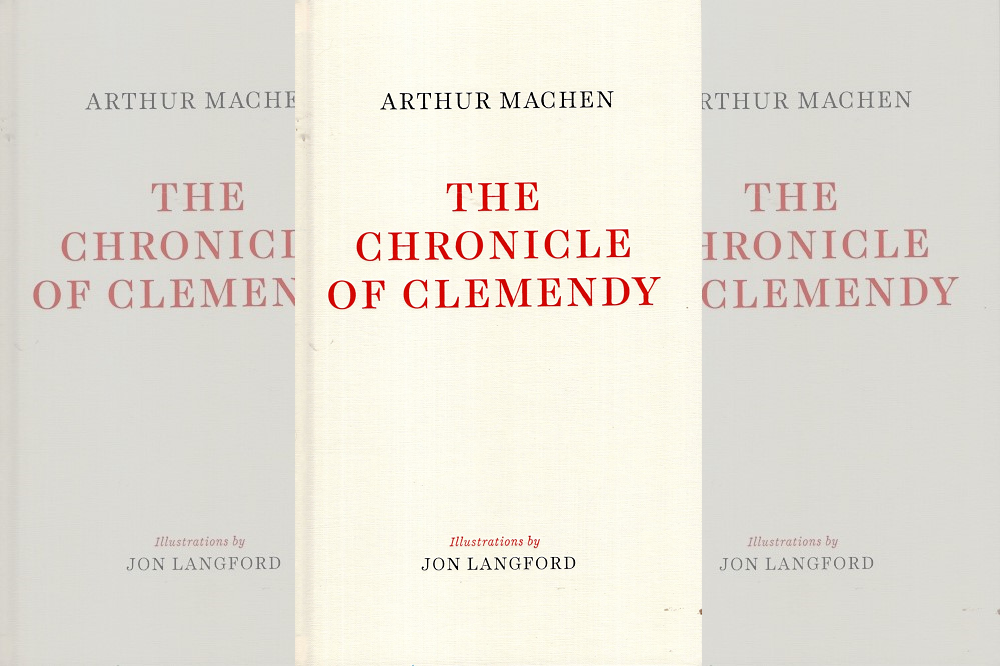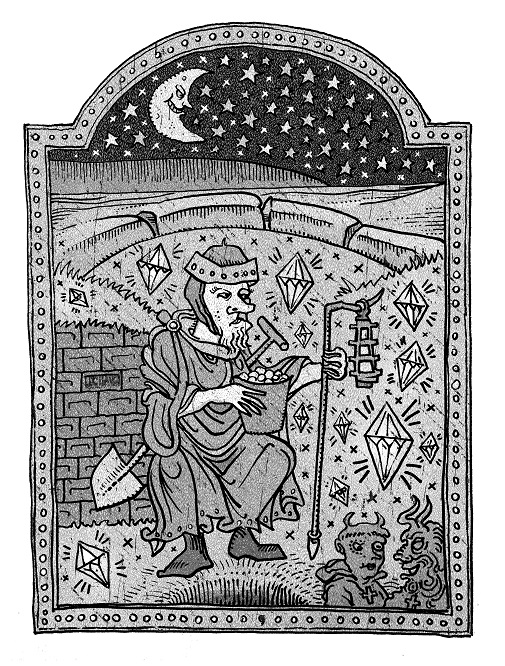Review: The Chronicle of Clemendy by Arthur Machen

Jon Gower
Arthur Machen was as skint as a church mouse when the penned The Chronicle of Clemendy, being his first book of fiction.
As Catherine Fisher tells us in her introduction, the young man’s prospects were notably dim as the 22-year-old had no cash, no degree and spent his time doing ‘hackwork for the publisher George Redway, spending time cataloguing, and clearly also reading, rare occult books, in a dingy attic.’
Drinking green tea whilst devouring works by Balzac and Rabelais, something about all this reading set off an idea. Machen would write his own ‘Great Romance,’ a vision of his beloved Gwent that he would people with knights and monks, fiends and faeries, complete with an array of Arthurian wonders.
The resulting book is a riotous tumult of words, intemperate as youth itself as Machen presents an array of stories much as Chaucer does in The Canterbury Tales or Boccaccio does in The Decameron, full of intricate asides and a plenitude of detail, especially lists of things.
Boy, does Machen like a good list! Much as Dickens gives you the contents of The Old Curiosity Shop or the US novelist Thomas Pynchon assembles long catalogues of technology in his books, so too does Machen conjure up his busy world by listing some of its features.
The days of old were ‘fertile in rituals, observances, processions, ceremonies, pomps and pageantries.’
The High Constable of Caldicot castle gathers about him ‘a small army of poets, romancers, stargazers, scholars, cunning mechanics, and dabblers in Hermetic affairs.’
Meanwhile a chapel fresco is populated with ‘ancient prophets and patriarchs, apostles, elders, martyrs, and the virgins feeding among lilies.’
A heady mix
Blessed with whole ticker-tapes of such lists, the whole book is one glorious, highly energetic example of what literary critics call periphrasis, or using six words where one might do.
It makes for a heady mix and it’s hard to imagine anyone reading it at one go, any more than one might devour a pound of chocolate truffles at a single stuffing, but there’s invigoration to be had within its pages and plenty of the stuff which later made Machen a popular writer and, by now, the nexus of a cult following.
There is the wildest weather and ‘all manner of strange sights, visions, hieroglyphics, steganographies, pyramids, triangles, spells, perpetual motions, hot fiery conjunctions, drolleries and mosaics.’
There are hymns of praise to the restorative properties of beer, often toasted by the ancient society of Cwrw Dda, and pastiche accounts of knightly adventure and derring-do.
There’s always a lot going on even in the shortest of these tales, packed as tight as sardines in tins or knights in ill-fitting armour.
The book is further enlivened by drawings by Jon Langford, whose art cheerfully mirrors Machen’s playful parodies of medieval literature.
Now living in Chicago, the Gwent musician – who has helmed many a band, from the Mekons through The Three Johns to The Men of Gwent – has produced a pantheon of images that look like those you find in the marginalia of illuminated manuscripts, but all leavened with humour and warmth.
Theer’s “The Man of Caerleon,” for instance, who wins the equivalent to the medieval Euromillions Lottery when he finds a treasure trove in St Julian’s Wood, including twelve diamonds, each representing a Knight of the Round Table.

A curious piece
In Langford’s lovely illustration part of the fun is finding all of the dozen diamonds whilst also noting the pair of devils hidden in one corner, seemingly laughing at the man, Griffith the Delver, who is gloating over his bucket of gold coins.
The book includes a tribute to Langford by fellow musician and BBC 6 Music presenter Mark Riley, who sketches out Langford’s artistic journey.
This has included a regular cartoon strip in the NME called ‘Great Pop Things’ as well as the cover art for various LPs, with Riley noting how ‘Jon’s sly, amusing illustrations for The Chronicle of Clemendy are a match for Machen’s sly, amusing text and they’re great as always…’
One imagines that this limited edition and beautifully produced volume to boot – based on the text of the 1888 edition – will soon sell out, such is the devotion to all things Machen and to his work, admired as he is by the likes of Stephen King, Mick Jagger, Guillermo del Toro and Neil Gaiman.
It’s the reading equivalent to releasing the hare from the traps in a greyhound race – panting, pulsing, sometimes pounding stories – often threatening to skeeter off in the wrong direction but then getting back on course.
For as Machen’s own epilogue has it, The Chronicle of Clemendy is a ‘curious piece.’ It is certainly that, like an omelette made with thirteen curate’s eggs, complete with the most liberal pinch of salt imaginable. And some fairy dust.
The Chronicle of Clemendy is published by the Newport-based Three Impostors. You can buy a copy here
Support our Nation today
For the price of a cup of coffee a month you can help us create an independent, not-for-profit, national news service for the people of Wales, by the people of Wales.




